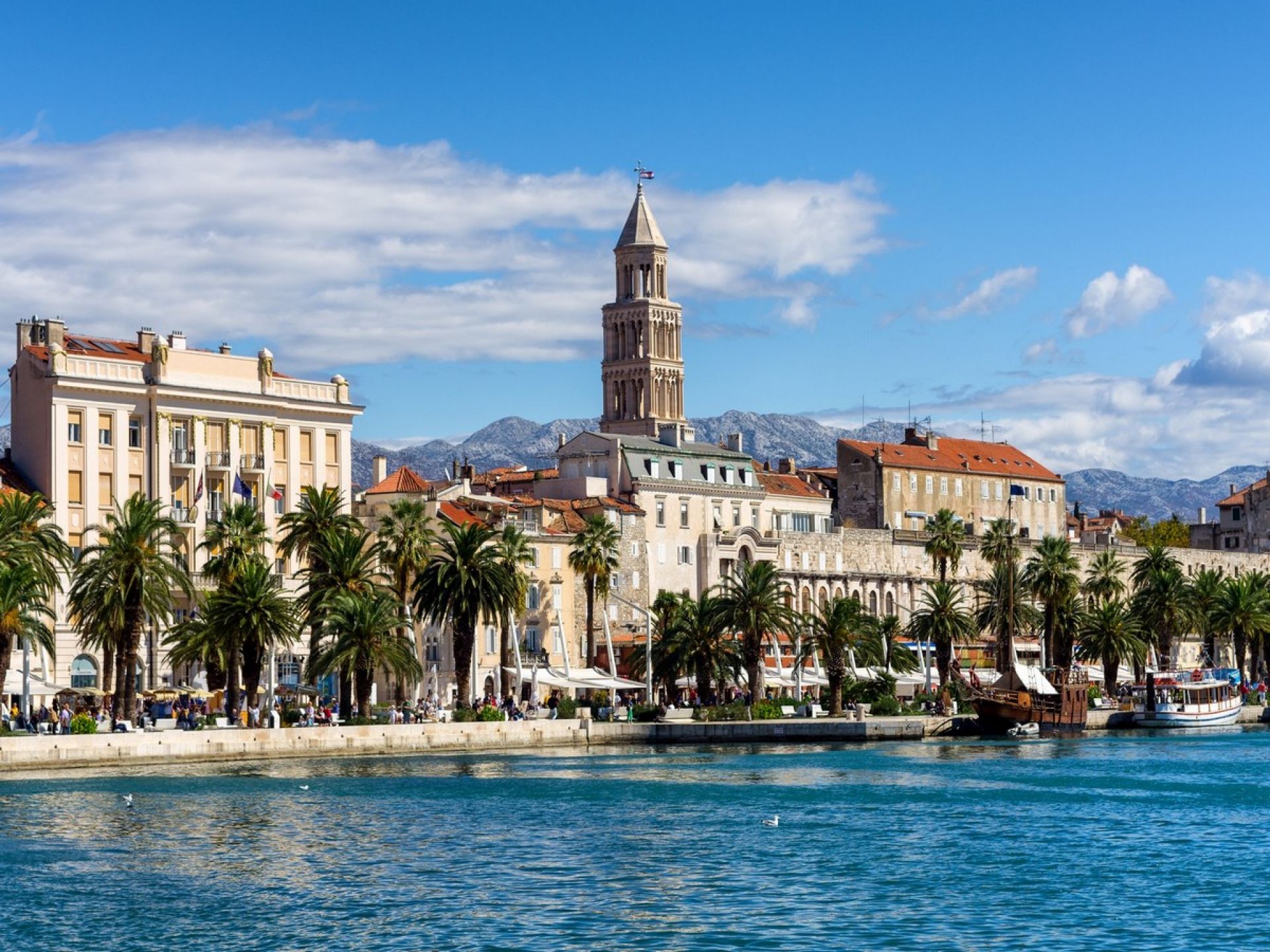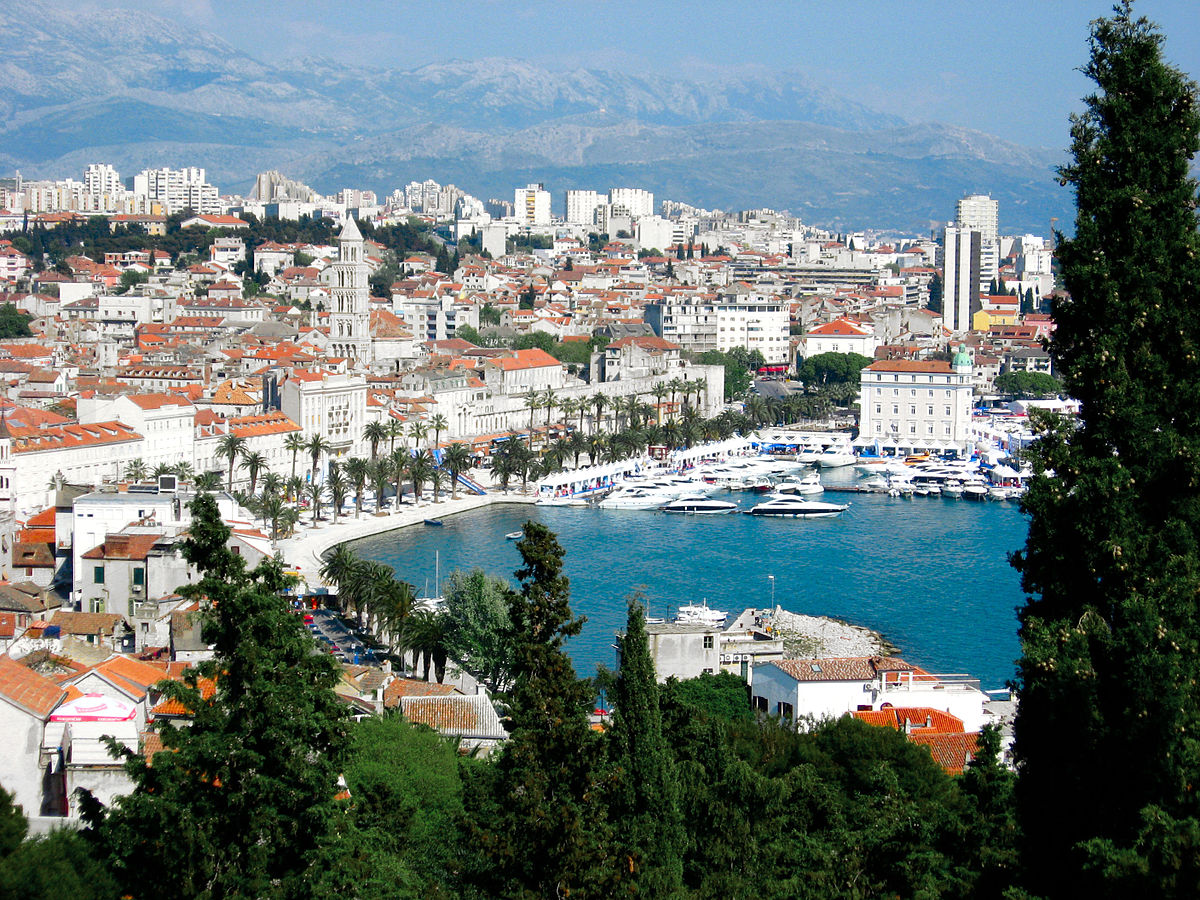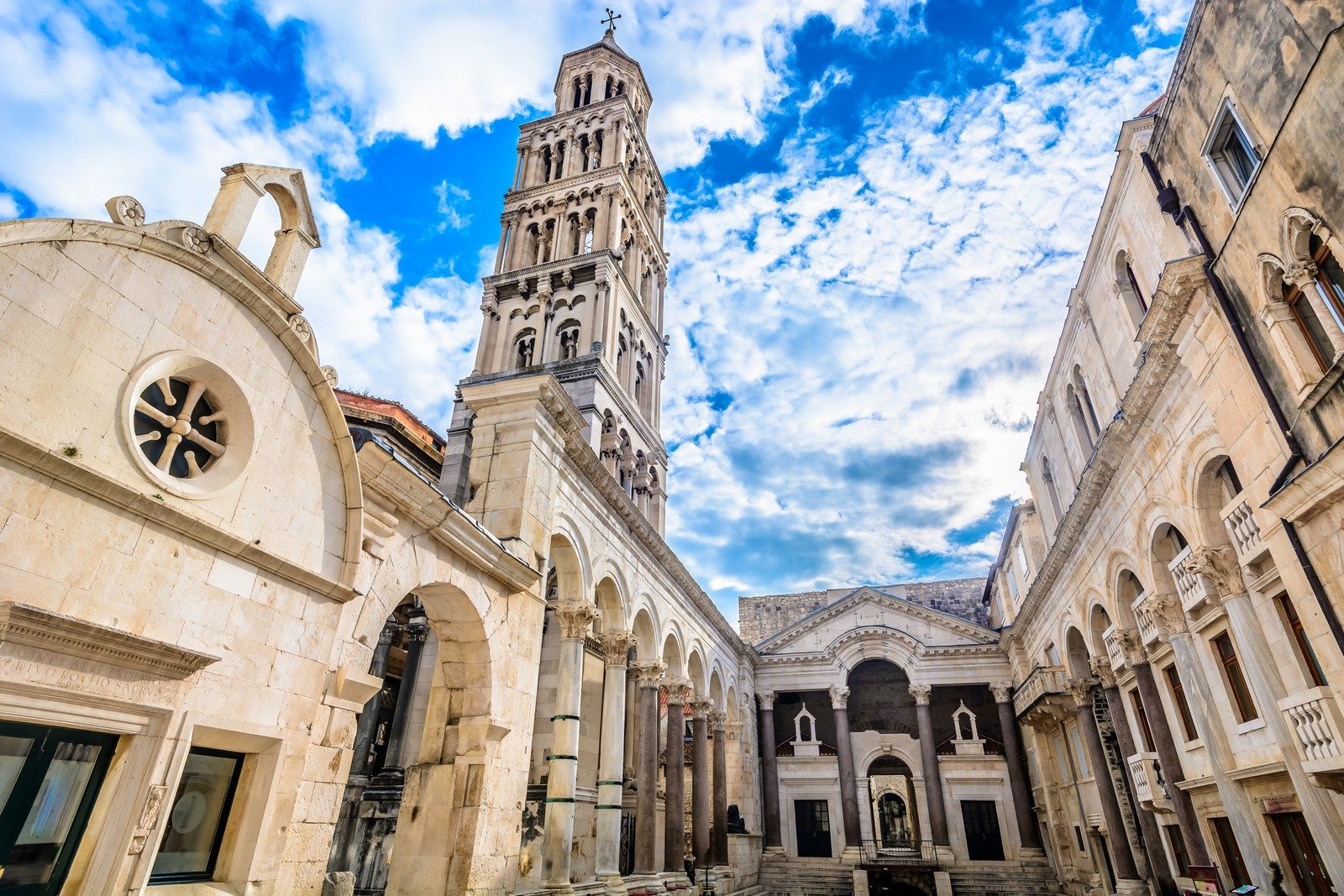Split
Split - Diocletian City


Split is a Mediterranean city, situated on the Marjan peninsula at the centre of the eastern Adriatic coast. Because of its favourable geographical position, Split has a typical Mediterranean climate, with long, dry, warm summers and short, mild, rainy winters.The official history of Split stretches back for 1700 years, when the Roman emperor Diocletian built his palace (emulating the form of the Roman military camp) as a place to which he would retire after stepping down from the imperial throne. However, preceding Diocletian’s palace, the site held the Greek colony Aspalathos, meaning the plant called Spanish or weaver’s broom (Spartia juncea). The plant is still numerous, especially on the southern slopes of the park-forest Marjan.
Location


Split lies on the Adriatic coast, central Dalmatia, on the Split (Marjan) peninsula. Although surrounded by sea as a peninsula, Split also borders with surrounding mountains, Mosor on the northeast, Kozjak on the northwest, and Marjan hill as one of the most important symbols of the city, rising on the west side of the peninsula, in the immediate vicinity of the old city centre. Split is also surrounded by the islands Brač, Hvar, Šolta and Čiovo.
Split is the largest city in Dalmatia, second largest city in Croatia and according to the latest census conducted in 2011 Split has almost 180 thousand inhabitants. Second largest Croatian cargo harbour, but also one of the largest passenger harbours on the Mediterranean. It is the administrative centre of the Split & Dalmatia County.
History


The history of Split is over-flowingly rich and turbulent to fit in just a couple of sentences. Although the Split area was earlier inhabited by the Greek colonies, Emperor Diocletian should be considered its first citizen and founder, starting his lavish villa of around 300 square meters near the great city of Salona in 293 AD, only to retire from the Roman throne within its walls after building it for ten years.
